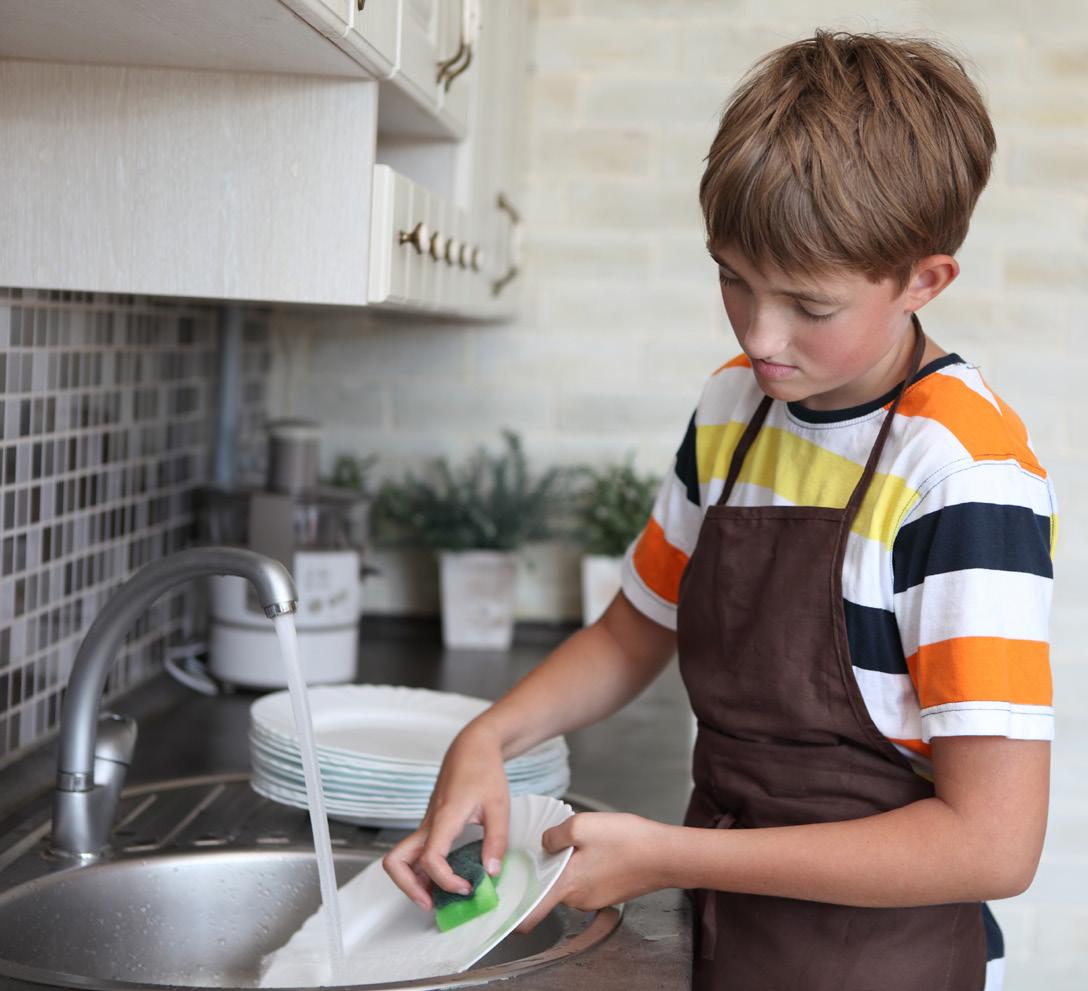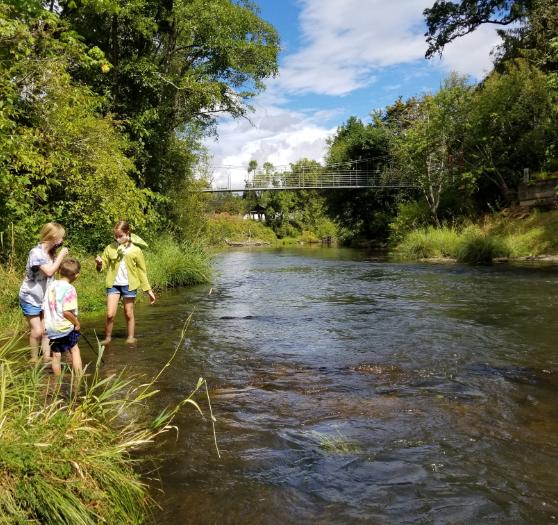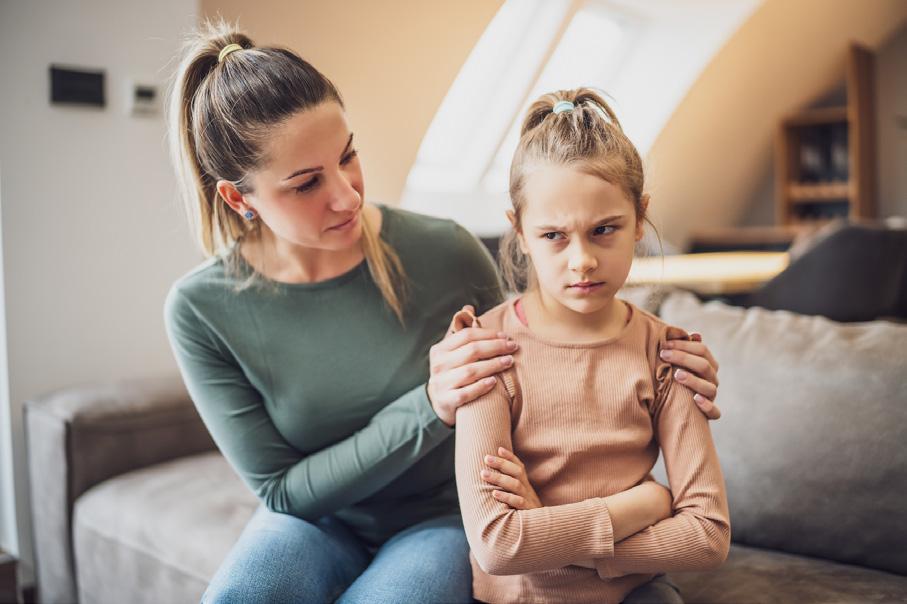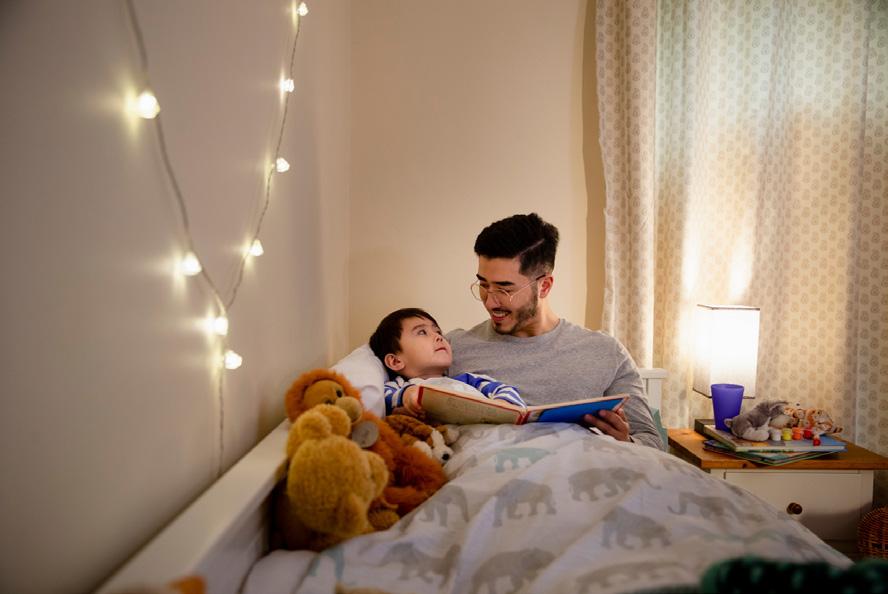






























1. RICK EPSTEIN
A Dad’s Eye View contributor, also awardwinning columnist, and journalist. Author of Rookie Dad (Hyperion) and The Right Number of Kids (McKenna Publishing Group). His wife and three daughters run a living laboratory in which he is constantly tested, analyzed, and experimented upon. It’s as if a guinea pig could write.
2. TANNI HAAS
Tanni HaasPh.D. is a Professor in the Department of Communication Arts, Sciences, and Disorders at The City University of New York – Brooklyn College.
3. BONNIE HARRIS
Bonnie is Oregon Family Magazine’s resident Movie Review Master Extraordinaire. She enjoys watching movies of all kinds, and has been doing movie reviews for over 9 years and counting. She lives in Eugene with her family, enjoys gardening and cooking.
4. JAN PIERCE
Jan Pierce is a retired teacher and freelance writer. She resides in the beautiful Pacific Northwest where many creepy crawlies are available for observation. Jan is the author of Homegrown Readers: Simple Ways to Help


Your Child Learn to Read available online at Barnes and Noble and Amazon. Find her at www.janpierce.net
5. SANDI SCHWARTZ
Sandi Schwartz is an author, journalist, and mother of two. She has written extensively about parenting, wellness, and environmental issues. Her new book, Finding Ecohappiness: Fun Nature Activities to Help Your Kids Feel Happier and Calmer, comes out in the spring. Learn more at www.ecohappinessproject.com.
6. KRIS ANN VALDEZ
Kris Ann Valdez is a freelance journalist and mother of three spunky children and a fluffy dog. She enjoys hiking, gardening, and writing for children. Her first elementary-chapter book is due out with Twenty Hills Press in 2026 under the pen name Ann Val. Follow her at krisannvaldez.com or @krisannvaldezwrites.
7. RODDY SCHEER
Journalist and photographer specializing in environmental issues, the outdoors and travel. When he is not out in the field taking pictures, Roddy runs EarthTalk, the non-profit Publisher of the syndicated EarthTalk Q&A column and the EarthTalk.org and Emagazine 1 2 4 3 5 6
Oregon Family Magazine is distributed monthly in the greater Lane County area at over 150 high-traffic commercial locations.
Parents Publishing EDITOR
Kauten
DESIGN/LAYOUT
Design & Illustration
Email: info@oregonfamily.com Web: www.oregonfamily.com Facebook: www.facebook.com/OregonFamily

FAMILY OWNED AND OPERATED SINCE 1993
Opinions expressed by contributors or advertisers are not necessarily the opinions of, nor an endorsement by this publication.
© 2025 Pacific Parents Publishing. All rights reserved. No part of this publication may be copied or reproduced without prior expressed written consent from Pacific Parents Publishing.
BY KRIS ANN VALDEZ
standing there in your sweats, hair pulled into a messy bun with that ugly bill in your hand. You went in for an oil change and came out with a new carburetor on the van. The x-ray for your kiddo’s broken arm is nearly the cost of your mortgage. Why did the water bill go up again? And goodness—insurance is due next month. How did six months go that fast? You tell yourself it’s just money and everything will work out, but the familiar nagging thought prickles your mind: How are we gonna afford this? Your heart thumps, stomach roils. Maybe, even, your hands shake.
The truth is, from diapers to braces to driver’s licenses… it’s not cheap raising a family. Even “sale” prices in most places give you sticker shock. That’s why you’re a secondhand mom.
When the kid complains their shoes don’t fit, it’s okay because you know every good thrift store and consignment shop in a 20-mile radius. You should have a bumper sticker that reads “I brake and U-turn for yard sales.”
Your Facebook Marketplace and Offer Up feeds are tailored to your search preferences. And when your friend offers you a trash bag full of hand-me-downs, you are a resounding yes!
It’s hard to explain why there’s magic in things that get a second (or third or fourth) life. Maybe it’s because you’re keeping perfectly good things from landfills. Or you remember someone you love wearing them

when they were ittie-bittier. Or maybe, the things are grateful in their own inanimate way, like characters you’ve read about in the most endearing children’s stories. Perhaps you simply believe everything (except lice and germs) are better shared.
Regardless of your why, you feel proud of your secondhand achievements. You find yourself bragging to your thrifty friends about this deal, or that. You delight in knowing the “bucko bucks” have been saved, and your kids really aren’t dressed too shabby! No one would suspect their clothes didn’t at least come from Target. (except for those days when they adorn themselves in a decoupage of mismatched patterns paired with the hand-me-down clogs three sizes too big. But that’s childhood, right?)
With a little searching, you can always find a great, barely-used pair of shoes. Maybe even, score some new-in-the-box Nike high tops from the neighbor’s moving sale a cool $15 bucks.
The beautiful thing about secondhand mom life… your kids learn how to find
treasure troves in the most unexpected places. They learn to think outside the department store box, and be sensible and economical in their spending. And also, to appreciate and give life to discarded, forgotten things.
In a way, secondhand mamas, you are the nursery fairy who fills their closets with Velveteen Rabbits hoping to be needed again. And for that, your children know your love is real. ✦


BY SANDI SCHWARTZ
ONE OF THE BEST THINGS WE CAN DO FOR our children is to let them spread their wings and experience the world a bit without us by their side. Sleepaway camp is the perfect summer activity for children to help them become more independent, build confidence, challenge themselves, learn new skills, and meet new people. Time away from home can broaden their perspective and lead them to discover who they are and what they want to become.
That first time heading off to sleepaway camp, however, can be intimidating and nerve-wracking for some children. They might feel homesick, experience separation anxiety, or struggle with meeting new friends or adapting to a new environment and schedule. Here are some tips to help you prepare your kids to make the transition from home to camp as smooth as possible.
Dictating what camp your children attend and for how long can end up backfiring. Instead, get your kids involved early on when shopping around for a camp so they gradually become more comfortable with it. Look at camp websites and brochures together; bring them with you to tour different camps; and let them be part of conversations with camp staff, current campers, and parents of campers who you connect with during the research process. Some camps even offer a special weekend for kids to try out the camp before registering for the following season.




One of the biggest adjustments of sleepaway camp is kids not having mom and dad around to do everything for them. Start building their independence by getting them more involved at home, such as picking out their own clothes, making their bed, organizing their room, cleaning up after a meal, and learning basic hygiene so they can do these activities on their own at camp. It is also helpful for them to have some sleepover trial runs so they can get used to sleeping in other places and build more independence.
In the months building up to the first day of camp, casually add camp to the conversation with your kids. At bedtime, set the scene for how fun it will be to have a sleepover with several friends that lasts weeks. Review the list of activities and ask what they are excited to try. Look at the camp’s social media posts from previous summers to show your kids what to expect. If you attended sleepaway camp or had a similar experience like living in a college dorm, share stories with your kids about what it was like.
Even if your child has already seen the camp in-person during a tour, it’s critical that you attend the orientation as a family, recommends Jenny Grogan, one of the camp directors at Farm Camp in Cazadero, CA, a traditional overnight summer camp for campers ages 7-17 on a real working ranch.
“We do a new camper orientation before the summer starts and then post it on our website, so even if you can’t attend, you can still see what questions were asked and get a general overview.” When kids can see what the camp is like and get used to it in advance, it can help reduce their anxiety about the first day. It’s also a way for your child to meet some of the staff and other campers, possibly making some friends before camp even starts. Don’t be shy about asking questions during the orientation.
If your kids are nervous, that’s okay. Just make sure the lines of communication are open so they express how they are feeling. By discussing their fears with you early on, you can talk through it and provide reassurance. Let them know that it’s normal to miss home but that camp will also be full of fun and new adventures. Reinforce the idea that camp is a safe place where they can grow and learn new things.
Grogan suggests focusing on a goal or purpose for them while they are at camp. “I always think that having a goal or a purpose in mind, like what are their hopes for going to camp, is helpful,” she says. “Because during those challenging moments, they are going to be able to think back to that goal.” She also highly recommends filling out the paperwork for your camper so the staff is aware of what might be an issue or concern for your child while away at camp.
In addition to talking about their worries, it’s helpful to provide them with a few tools to help them cope when they are struggling. “Pack postcards in their suitcase so they can write you letters whenever
they are missing you or a weighted blanket to sit and hang out with,” says Grogan.
Other helpful coping skills include breathing exercises, meditating, taking a walk, reading a favorite book, writing in a journal, using self-talk, listening to relaxing or upbeat music, and talking to a friend or counselor. Finally, be sure to identify a point person that your child can seek out when feeling uneasy, whether that be a counselor, camp director, or an older camper that you know from home.
The more your campers are involved, the more prepared and in control they will feel. Plus, it will help them get excited to start camp. Bring them along to shop for camp supplies and let them pick out their favorite items to take with them for the summer. Don’t pack their bag for them; instead, encourage them to help go through the packing checklist with you. This can be a fun activity, especially if they have some say in what they get to pack. Including their favorite comfort items in the trunk can also help ease their worries.
As the first day of camp approaches, take the time to discuss exactly what will happen when you drop them off at the bus stop or at the camp itself. Some kids board a bus in their local area and then travel for a few hours to camp, so it’s important they know how it will all work. Don’t hesitate to call the camp to explain the details about dropoff and the first day so you can describe everything to your kids ahead of time. When that day finally arrives, try to keep your goodbyes brief and avoid becoming too emotional (wear sunglasses to hide your tears if you must) to avoid upsetting your kids. If they see that you are upset, they may feel guilty or scared about leaving.
By following these helpful tips, both you and your children are sure to have a less stressful experience as they embark on their first trip to sleepaway camp. ✦





BY TANNI HAAS
AsYOU CELEBRATE MOTHER’S DAY THIS year, why not give yourself and your partner a gift that keeps on giving? We all know how difficult it can be to make the relationship, let alone romance, a priority with so many other responsibilities. Here’s a list of some of the very best podcasts that are sure to deepen your connection and help make sparks fly.
(Available on: Apple Podcasts, Audible, Spotify)
One of the longest-running and most popular relationship podcasts is Where Should We Begin?, hosted by psychotherapist and bestselling author Esther Perel. And for good reason. On her podcast,

Esther counsels couples of all ages and walks of life on how they can strengthen their relationship and infuse it with more love, laughter, and romance. So whether you’re newlywed or been married for a long time you’ll find lots of inspiration on how to enrich your own relationship.
(Available on Apple Podcasts, Audible, Spotify)
If you’re looking for a male perspective on relationships and romance, try On Purpose with Jay Shetty. The podcast is hosted by Jay Shetty, a bestselling author and former monk who’s now happily married to his wife, Radhi Devlukia-Shetty, who often appears as a guest on the show. On his podcast, Jay talks a lot about what you can do to cultivate a happy and fulfilling relationship. He interviews psychologists and therapists and often engages celebrity guests in conversation. Recent guests include such well-known personalities at Tiffany Haddish, Tom Hanks, Kevin Hart, Alicia Keys, and John Legend.
(Available on Apple Podcasts, Audible, Spotify)
If you’re looking for more concrete suggestions on how to create more intimacy in your relationship, Pillow Talks would be a great choice. Hosted by licensed psychotherapist and sex therapist Vanessa Marin and her husband, Xander, this podcast offers direct and frank couples advice on everything related to emotional and physical closeness. Recent episodes focus on such important topics as how to communicate your likes and dislikes and how to find time for romance in our busy, daily lives.
(Available on Apple Podcasts, Audible, Spotify)
The Endless Honeymoon is one of the funniest relationship podcasts around. Hosted by married comedians Natasha Leggero and Moshe Kasher, this podcast features conversations with many other comedians and offers advice on how to keep your relationship lighthearted and full of humor. Listeners are encouraged to call in to share their own experiences and to ask questions that are then discussed on the show.
(Available at: Apple Podcasts, iHeart, Spotify)
Sometimes, you can find as much, if not more, inspiration from listening in on other people’s experiences than from outright advice. Love Letters is the brainchild of Meredith Goldstein, a well-known newspaper columnist who has an advice column with the same name. On her podcast, Meredith lets individuals and couples tell their own stories in their own words of how they improved their relationships and love lives. She’s the author of Can’t Help Myself: Lessons & Confessions from a Modern Advice Columnist ✦

MOTHER’S DAY IS A TIME TO CELEBRATE AND treat mom to a delicious breakfast or brunch. Whether it’s a meal in bed or a beautiful spread on the dining room table, make the day special with this Brunch Fruit Tart, sure to impress. This tart has a tasty granola crust and colorful fruit topping to start Mother’s Day in style. It’s a sweet option to begin her day on a perfect note.
CRUST:
• 4 cups granola mixture
• ½ cup butter, softened
• 4 ½ tablespoons honey
• nonstick cooking spray
FILLING:
• 2 ¼ cups vanilla Greek yogurt
• 8 ounces cream cheese, softened
• ½ cup granulated sugar
• 1 teaspoon vanilla extract
• 1 package gelatin
TOPPINGS:
• strawberries, sliced
• blueberries
• kiwis, sliced
To make crust: Preheat oven to 350 F.
In large bowl, combine granola, butter and honey. Grease 11-inch tart pan with nonstick cooking spray. Line bottom of tart pan with parchment paper. Press granola mixture into tart pan. Place tart pan on baking sheet and bake 10 minutes. Cool completely.
To make filling: Using mixer, combine yogurt, cream cheese, sugar, vanilla extract and gelatin until whipped completely. Pour yogurt mixture into tart crust. Refrigerate at least 1 hour. Top with strawberries, blueberries and kiwis.
Recipe adapted from homemadeinterest.com
For more brunch recipes, visit Culinary.net

some sunny days mixed in with a little rain. Early flowers are struggling toward the sunlight ready to burst forth with color and your little ones are antsy and eager for something new. Why not plan something special? How about a “high tea” with fancy food, friends and a fun theme? You may even get the chance to teach a few table manners to your princes and princesses.

Get the kids on board with the planning. If you’re dealing with princesses only, the theme will be frilly and easily decided. If there are princes involved, you’ll need to include a super-hero or two. Or possibly pirates or dinosaurs. Let the kids choose a theme they’re really invested in—something they will love to create plans for. Something they’ll be excited to take part in when the happy event arrives. If you get stuck, movie characters or book characters might save the day.

Unless you have a large family, you’ll probably want to invite a few friends to join in the fun. Four to six children is optimal since the tea is a more formal event than free play. (You may include a quick run around the back forty or some other active play before the tea begins. Just to get the wiggles out.)
Decorations for the tea will follow the theme. You may want to plan a simple craft to go along with the day. One idea is to decorate a picture frame, then take a good photo of the day to include later for a wonderful memory. Other decorations will include plates, cups, napkins and a tablecloth. You might choose to enlist your kids to hand decorate the plates or cups. Or sort through the family possessions for some fancy tablecloths or napkins or doilies to make the decor special. The ever-popular strings of chains might keep the kids involved if they’re colorcoordinated with your theme. Paper banners to hang or to wear over the shoulder will make the day more festive. Paper crowns or inexpensive tiaras add to the drama.
Since teas are generally served with both sandwiches and sweets, here are some ideas for a child-friendly version of the day:
Drinks: You might try herbal teas, but be prepared to serve something more familiar such as chocolate milk, lemonade or hot cocoa.
Sandwiches: Most children are a bit picky about sandwich fillings, so stick to choices that are easy on their palate such as turkey on whole wheat, nutella and banana on white, cinnamon cream cheese on rye, cinnamon toast points or pbj on virtually any kind of bread.
Sweets: Brownie bites, mini-cupcakes, chocolate-dipped shortbreads, fruit kabobs with marshmallows or rice krispie treats cut into cookie cutter shapes are some good choices.
Be sure to involve your kids in both the planning and the final preparations. They can help set the fancy table, gather flowers for a centerpiece, make and cut the sandwiches, mix and help bake the cookies, frost cupcakes and add sprinkles, and so much more.
Be sure your guests know they’re to come dressed according to the theme and ready to hold their pinkies up as they drink their beverages.
Let the fancy fun begin. ✦


• www.bbcgoodfood.com/recipes/collection/afternoon-tea
• https://whatscookingamerica.net/EllenEaston/ChildrensTeapartyMenu.htm



BY JAN PIERCE

KIDS LOVE PETS AND FAMILIES ARE enriched by the companionship of dogs and cats and other furry creatures. But maybe you’re not ready for prime time pets just yet. If your children are old enough to observe the antics of insect pets and you want a low maintenance pet experience, an insect is the perfect choice. And, they lend themselves to prompting many science observations as you enjoy them.
In Japan and Europe it’s quite common to keep insects as pets. Young children look forward to keeping and caring for crickets, katydids, mantids and beetles. The Japanese favorite is the giant Stag Beetle. Pet shops provide bamboo cages and other habitats plus the food items necessary for their care.
What are your choices? Well, there are many insects readily available at your local pet shop or from online distribution websites. I’ve steered away from spiders although many think they are fantastic pets. Spiders come with the ability to bite and some are venomous. Still, if you’re the adventurous type, you can go out in your own back yard and capture a pet to keep for a time before releasing it back into nature. Or, pick up a tarantula at the pet store: lots of kids love them for their “creepy” value. But here are some other choices.

MANTISES. Mantises are predators and require other live bugs as a food source. They will eat flies, moths, crickets or cockroaches. Preparing the living environment is simple: Just use an aquarium with a mesh cover, place natural objects such as twigs, rocks, soil or sand inside and be sure to have at least one twig that reaches the top of the aquarium for molting time. Mantises can be held gently. They like high humidity so mist daily with a spray from a water bottle. Mantises have a short lifespan—six months at the most. ANTS. We all know ants are industrious little creatures. They are fascinating to watch as they go about their work. There are the traditional ant farms in which dirt is the medium or the newer types of containers in which gel allows for easier observation. Some of the gel farms are illuminated with LED lights in various colors for a striking ant home presence. Ants eat seeds, pollen, sugar and some eat other insects. The usual variety of ant in store-bought farms is the Harvester Ant. These are vegetarian and can be fed with grain or seeds. Small crumbs of bread or biscuit will give them the sugar and fat they need. The gel ant farms require no feeding as there is food in the gel.

BUTTERFLIES OR MOTHS. It is great fun to purchase butterfly or moth cocoons and then wait in anticipation for them to hatch. The cocoons require a wintering period of time before they will begin the hatching process. Most will hatch in May or June.
BEETLES. Beetles are lively insects and a good pet choice for the beginner. You can purchase a jelly product for food or supply small bits of fresh fruits and vegetables. Beetles like places to hide in their environments and most prefer a sandy, dry flooring. They come in a variety of colors and sizes. Two favorites are the warty ground beetle which eats snails or the black death beetle, named for his habit of “playing dead” when disturbed.
WALKING STICKS. From the order Phasmida, walking sticks rely on camouflage for their defense against predators. They’re one of the easiest pets to keep as they need only brambles such as blackberry canes kept in a container of water and they’re happy and well-fed. There are many species of walking sticks and they’re fascinating to watch.
Insects are inexpensive, easy to care for, quiet and make no messes. They’re ideal pets to keep for a relatively short period of time to begin teaching your child the habits necessary for caring for larger and furrier family companions. Find insect pets at your local pet store or at one of the following websites.
• www.BugsinCyberspace.com
• www.antfarmcentral.com
• www.petbugs.com.
Boost your child’s basic science skills of observation and data collection using this simple process. Gather a journal or homemade booklet, pencils, colored pencils or crayons and a magnifying glass, and encourage your child to spend a set amount of time (from five to ten minutes) simply observing their pet. Have them date each entry and use the following checklist to record what they see (an adult can help with the writing).
• Any movement observed
• Interesting body parts of your pet
• Creature interactions
• Changes over time
• Anything surprising or interesting
• Jot down any questions you have for further research.
• Draw a picture of today’s observations. They can repeat this process several times a week and note changes. This is a good time to introduce simple graphing skills. ✦

• Children’s Guide to Insects and Spiders by Jinny Johnson, Simon and Schuster. Contains detailed information with lots of facts and full-color photos. For ages 7-10
• Big Book of Bugs by DK Children. Lots of buggy facts and figures with larger than life photos. For ages 5-8
• The Best Book of Bugs by Claire Llewellyn. Information on life cycles and habitats, beautiful illustrations. For younger readers, ages 4-8
• For your budding artists: How to Draw Insects by Barbara Soloff Levy, Dover Publications. For ages 5-10
• www.si.edu The Department of Systematic Biology, Entomology Section, National Museum of Natural History.
• www.BugsinCyberspace.com
• www.squidoo.com Science Skills: Making Observations and Asking Questions Like a Scientist.















Big
Singing Creek Educational Center https://www.singingcreekcenter.org 541


EMFC Open House Wed May 7 | 5-8pm @ LCC
EMFC Junior Academy Placement Boys & Girls born in 2018, 2017 and 2016 May 20-21 @ LCC
EMFC U11-19 Tryouts Boys & Girls born 2015-2007 | May 15-19 @ LCC
EMFC Girls Camp 2025 Girls age 6-15 | May 31, 9am-3pm @ LCC












BY BONNIE L. HARRIS
IT DOESN’T BODE WELL when the trailer for a movie is more fun than the film itself. And although Paddington in Peru made a splash at the box office and a boatload of critics raved about its appeal, it just doesn’t have the charming, adventurous pizazz that made the original 2014 film a hit. Genuine humor is replaced
PADDINGTON IN PERU
Sony Pictures, Rated: PG Streaming on Amazon
by pratfalls and corny sight jokes, and a decent soundtrack is completely absent. But Paddington in Peru does have just about every familiar British actor you can name along with the dashing Antonio Banderas playing a greedy riverboat captain. It’s definitely colorful, fast-paced, and the CGI animation is first rate as Paddington hunts for his lost Aunt Lucy, who eventually leads him and the Brown family to the lost treasure of El Dorado. Along the way, they encounter a devious Mother Superior, who kidnapped Aunt Lucy,

ghostly conquistadores, jungle spirits, and a pretty scary giant purple tarantula that lands on Mr. Brown’s face! It’s a long trek through Peru and sometimes the narrative drags a bit between the chase sequences. But eventually, Paddington discovers his long-lost bear family and the Browns discover how to reconnect away from their hectic life in London. Younger viewers will enjoy Paddington’s many mishaps and his love of marmalade sandwiches, which
THE LIFE LIST
3DOT Productions, Rated: PG-13 Streaming on Netflix
THANK GOODNESS FILMMAKERS still produce those wonderful rom-com stories that can make you laugh and cry, and can renew your faith in love. The Life List, starring Sofia Carson and Connie Britton, brings a twist to the usual girl-meets-boy story through a teenage To Do list that becomes a mother’s legacy. When Alex’s mom dies prematurely, Alex expects to inherit the family business, but her mother has other plans for her wayward daughter. In order to inherit, Alex must complete a list of forgotten tasks she set for herself when she was thirteen. As each task is completed, she receives a recorded DVD of her mother, and at the end of a year, she’ll receive her reward. What Alex discovers, however, is that the straightforward tasks have complicated outcomes and hidden secrets. Set in NY, the characters, humor, and dialogue are East Coast, but the thoughtful story and emotional
he shares with the guardian bears of El Dorado. In the end, with Aunt Lucy safe and the secret of El Dorado revealed, Paddington has to choose a family. Not surprisingly, he chooses to return home with the Browns and their world is all the better following their Peruvian adventure. Pop some popcorn and settle in for an acceptable romp through the make-believe jungle. The credits are cute and they provide a quick peek at the next Paddington sequel. ✦

pull of a daughter missing her mother are universal. Alex reconnects with her brothers and her estranged father, and learns more than she could have imagined about herself and her mother. And of course, girl gets the right boy in the end. Be sure to have a couple Kleenex handy and enjoy!











IT’S EASIER THAN YOU THINK
HERE’S THE SECRET FOR achieving a glowing complexion: there is no secret! In fact, a key factor in achieving great skin at any age comes down to one common denominator that’s no secret at all. It’s simply taking good care of your skin.
After all, your skin is your body’s single largest organ. It’s your protective shield, but can also reveal the truth of your age, especially if you’re lax when it comes to regular skin care.


Keeping the skin hydrated maintains its barrier integrity. When the skin becomes dry, it reduces the effectiveness of the skin barrier, making it less resilient against irritants and allergens.
Often, when the skin is dry it feels more rough or flaky. With proper hydration, skin feels smoother and looks more supple. Achieving hydration through a better skin care routine, drinking plenty of water and eating certain fruits and vegetables can improve your skin’s appearance, maintaining a radiant, healthy complexion.
Despite what your mother may have told you, squeaky clean isn’t always best. A better bet when it comes to soap is a product that respects your skin’s moisture balance and cleanses without creating tightness or irritation.
Mild options such as Pears skin cleansing products are specifically formulated and dermatologically tested to be gentle on the skin. They’re made with plant-based glycerin, which is a powerful humectant that attracts water from the environment and deeper layers of the skin to the outer layer, keeping it hydrated. Glycerin-based cleansers can help prevent stripping of the skin’s natural oils, which averts a tight, dry feeling.
“More than ever, consumers are looking for mild and gentle products that are effective,
smell good and work well,” said Dr. Adriana Lombardi, founder of the Skin Cancer & Cosmetic Surgery Center of New Jersey. “Pears soap checks all the boxes. It creates a really nice, thick lather and smells crisp and clean while leaving the skin hydrated.”
Even the best products may not overcome the potential harm that comes from taking showers that are too hot. Heat removes your skin’s natural oils, which leaves you prone to itching and dryness and may worsen skin conditions.
Instead of cranking up the heat, opt for lukewarm temperatures and keep shower time brief. Use moisturizing cleansers, and apply moisturizer immediately after showering to replenish and rehydrate your skin.
After completing your skin cleansing routine, there’s an additional step to help maintain healthy, hydrated skin before heading outdoors: Take time to apply a layer of sunscreen to skin that will be exposed, including your face, ears and hands. Reapply every two hours if you’re spending ample time outside. Sun damage prematurely ages the skin. You may not feel the heat as much during colder times of year, but the rays are still capable of damaging skin, maybe even more so because you don’t feel the burn. For more advice for keeping your skin supple and soft visit Amazon.com/pears ✦
BY RICK EPSTEIN
AMANDA IS THE mean queen of my daughter Sally’s fifthgrade class. Her throne-room is littered with the bodies of her social inferiors. Sally brings home tales of Amanda’s snippy cruelty.
“I have a new puppy,” Matt announces at recess.
“No one CARES about your PUPPY, Matt,” says Amanda acidly, and her worshipers turn their attention elsewhere as Matt, suddenly smaller than a Chihuahua, wonders when fifth-graders quit caring about puppies.
So why do Sally and the rest of the fifth-grade girls want to be around Amanda? Well, she’s cute. She has lots of trendy clothes with the right labels. Her mother takes her to Paris and Hawaii. She and her friends get to watch R-rated movies in her attic playroom, and she has a two-story playhouse with electricity and a screened-in porch. A sleep-over there is a glimpse of bachelorette paradise.
Plus, Amanda is Cool. With flashes of Cold. When Sally spends a lot of time with Amanda, she comes home and makes emotional mince-meat out of her little sister Wendy, putting her down, making her feel stupid. Of course, when she brings Amanda home, Amanda does the mincing up of little Wendy herself.
“Dad, can Amanda sleep over?” Sally asked one Friday. “I don’t know,” I stalled. A flash of inspiration: “What do YOU think, Wendy?”
“No!” said 6-year-old Wendy. “Amanda calls me a brat and is mean to me.”
“Dad!” said Sally, “You’re not going to let HER decide, are you?”
“Yep,” I said. “This house is Wendy’s sanctuary. We’re not going to let an outsider come in and make her feel bad.”
“I don’t want Amanda,” said Wendy. “Get Melissa to sleep over.” Melissa is a kind and polite kid whose parents are plainly in charge of her.
Sally said, “That’s not fair!” and invited no one.
When Sally wants to sleep over at Amanda’s, we say no. I want to tell her why, but my wife says if we do, Sally will tell Amanda, and Amanda will tell her mom, then diplomatic relations between the two families will be strained, and the next thing you know we’ll start sinking each other’s ships, as we are drawn inexorably into a war that none of us really wants.
Amanda isn’t my kids’ first bad friend. When our oldest daughter Marie was 3, she was discovered by a
neighborhood 4-year-old named Heather, who suddenly was coming into our house four or five times a day. She would walk right in without knocking.
Heather liked to frighten Marie with scary stories about monsters and rabid possums, and drag her into games she didn’t want to play. Sometimes I’d find Heather berating Marie
I made a rule: They had to play at our house so we could supply back-up. One afternoon Marie came out of her room and said, “Heather wants me to be the baby in our game and I don’t want to.”
“Just tell her that,” I said.
“But every time I want to talk, she’s already talking,” she said.

We consulted and then Marie marched back into her room and said, “Heather, you think you’re the boss of everyone, but you’re the boss of no one.”
For once Heather had nothing to say. She flounced out the door and stomped home. She stayed away for two hours.
In ensuing years Heather faded out of Marie’s life and I hope that happens with
One day last week I was walking Sally home from school, quizzing her about this and that. “So, who would you say is your best friend?” I asked.
“Melissa,” she said.
“Good,” I said, handing her
Her look said: ??!!
“For having such good taste in friends,” I explained.
Maybe I don’t have the intelligence for subtle manipulation, but I have money and opinions – and I’m not afraid to use them. ✦
Rick can be reached at rickepstein@yahoo.com.
Meet KONA , the sweetest Cane Corso mix around! This 7-year-old gentle giant is very deserving of her forever people who will give her a permanent comfy spot on the couch and all the yummy treats she deserves! She is a very sweet, friendly girl who is looking for a caring family that can provide a routine lifestyle. She’s extremely smart and loves to show off her manners. After a short walk, Kona enjoys lying next to you and giving you a slobbery kiss! She is a polite, calm dog who makes a wonderful companion.

Kona is looking to be the queen of her castle, so she must be the only pet in the home. She is 70 lbs. of love, has a gorgeous dark brindle coat, and the sweetest eyes. Kona is spayed, microchipped, and up-todate on vaccines prior to adoption. Kona is part of the Foster-To-Adopt program, so an interested family can foster Kona to see if she is a good match before committing to adoption.
Greenhill Humane Society is open seven days a week, 11 am – 6 pm at 88530 Green Hill Rd in Eugene. For more information, call (541) 689.1503 or visit www.green-hill.org.
The Cat Rescue & Adoption Network presents CATALANA , a beautiful and social female teenager kitty about 10 months old with lovely white fur and a gray tabby jacket. She doesn’t take long to feel comfortable in new situations and to warm up to new people. Catalana is an energetic kitty who loves to play with toys and climb tall cat trees. This affectionate girl loves other cats, dogs, and kids! With her playful and sweet nature, Catalana would be an amazing addition to your household. She has been spayed, vaccinated, microchipped, and is negative for FIV & FeLV. To meet Catalana in foster care, please call 541-225-4955 option 1, or visit our website at CatRescues.org








The Sustainable Events Services (SES) Program—coordinated by Waste Wise Lane County (Lane County Waste Management), the City of Eugene, and Action Rent-All & Events—provides large events with reusable dishware that diverts disposable plates, bowls, and utensils from the trash. And after an event, SES collects the dirty dishes.
It’s as easy as that.
Sign up your event today at lanecountyor.gov/wastewise-events

-- G.R. SYMES, TALLAHASSEE, FL
are tiny plastic fragments that pollute oceans, rivers and the air. They’re now being linked to a serious public health threat known as antibiotic resistance. Scientists have started to uncover how these microscopic particles can be found everywhere from bottled water to human blood, which might be speeding up the spread of antibiotic-resistant bacteria. Given that antibiotic resistance is already a growing crisis with the potential to make common infections untreatable, the role of microplastics in this issue is raising serious concerns. But how exactly do these tiny particles contribute to such a big problem?
One way microplastics fuel antibiotic resistance is by acting as “hotspots” for bacteria to interact and exchange genes. “Microplastics provide a surface for bacteria to attach, form biofilms, and share genetic material, including antibiotic resistance genes,” says Mengyan Li, an environmental microbiologist at the New Jersey Institute of Technology. As
bacteria gather on microplastics in water systems or soil, they actively pass resistance traits
can also absorb antibiotics and other pollutants from the environment. This exposes

impacts are still being studied, their ability to carry resistant bacteria into the human body is alarming to say the least. If antibiotic-resistant microbes hitch a ride into the digestive system, they could potentially transfer resistance genes to the body’s own bacteria. This makes the risk of hard-totreat infections even worse.
to each other more easily. Over time, these interactions lead to more strains of bacteria that no longer respond to antibiotics, making infections way harder to treat.
Besides acting as bacteria breeding grounds, microplastics also carry chemicals that make the problem even worse. Many plastics contain additives like bisphenols and phthalates that increase the chances that they develop resistance. Microplastics
bacteria to low doses of these drugs and encourages them to adapt. This combination of factors turns microplastics into tiny but dangerous incubators for antibiotic resistance.
That microplastics are everywhere makes tackling this issue really tough. These particles have been found in drinking water, seafood and even human organs, suggesting that we are constantly exposed to them. While the exact health
Fixing this problem means reducing plastic pollution at its source. Experts suggest stricter regulations on plastic waste, better filtration in water treatment plants, and more research into biodegradable alternatives. Also, efforts to combat antibiotic resistance are more important than ever. Even though microplastics might seem small and insignificant, their role in the global antibiotic resistance crisis is definitely not. ✦
CONTACTS: Microplastics Could Be Fueling Antibiotic Resistance, https:// www.bu.edu/articles/2025/microplastics-could-be-fueling-antibiotic-resistance/
EarthTalk® is produced by Roddy Scheer & Doug Moss for the 501(c)3 nonprofit EarthTalk. See more at https://emagazine. com. To donate, visit https://earthtalk.org Send questions to: question@earthtalk.org
